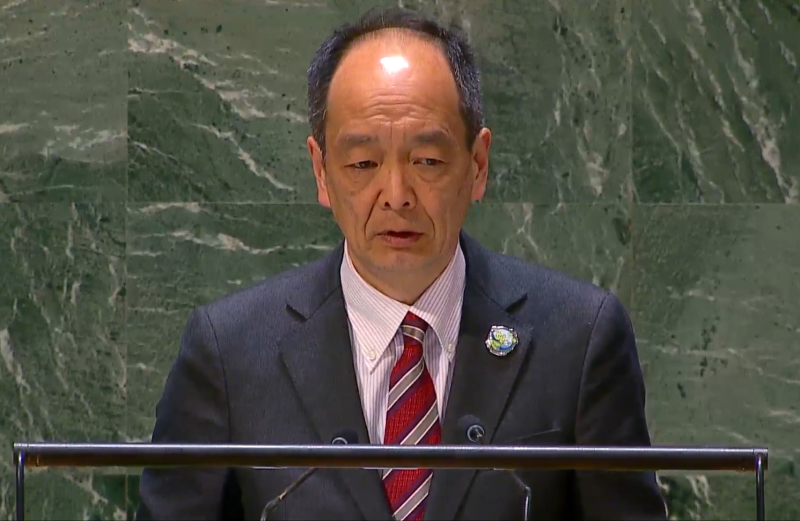サステイナビリティ・ウィーク:「インフラ連結性を通じたグローバルな強靱性の構築及び持続可能な開発の促進に関する非公式対話」における山中大使ステートメント
令和6年4月18日

Thank you, Mr. President,
Today's dialogue is very timely, as the need for resilient infrastructure is increasing in the face of more frequent and more severe natural disasters due to climate change.
Japan, a disaster-prone country, has long been developing infrastructure such as levees, spillways, and sluice gates around rivers, roads and ports to reduce the human and economic damage caused by floods and tsunami. We also construct buildings to resist earthquakes and landslides.
Leading the discussions on the Sendai Framework for Disaster Risk Reduction, Japan continues to urge the international community to mainstream this framework. In this regard, Japan has been supporting developing countries with infrastructure development that contributes to disaster risk reduction. In the Solomon Islands, for example, JICA is developing a project to repair the main road connecting the capital and the international airport, enhancing drainage capacity and contributing to disaster prevention.
Mr. President,
Adequate financing is essential in promoting such efforts. In the face of enormous demand for new and improved infrastructure in developing countries, it is necessary to raise funds by mobilizing all possible resources, including from both the public or private sectors.
Given that sustainable finance and private-sector funding now exceed ODA, it is crucial to mobilize these new funds for the development of robust and resilient infrastructure. Last year, JICA issued its first bond for disaster risk reduction and reconstruction to support preparations against and recovery from natural disasters, aiming, for example, at projects to make urban buildings in Bangladesh more resilient against earthquakes, and to support the development of operational plans for riverbank protection and rehabilitation, dam management, and flood prevention systems in Tunisia.
Mr. President,
Infrastructure connectivity is also key to achieving resilient and sustainable development. In particular, connectivity is essential to facilitating the transportation of goods and people and thereby develop peripheral areas of economic corridors.
A project in this area supported by Japan is the 1,000-km long Southern Economic Corridor, spanning the southern Indochina Peninsula between Vietnam, Cambodia, Thailand, and Myanmar. This corridor has become a major transportation and logistics artery in the region.
In this connection, Japan appreciates Poland’s leadership towards the adoption of the resolution on building resilience and promoting sustainable development through infrastructure connectivity, at the UN General Assembly last year.
Japan would like to accelerate efforts to achieve the SDGs through the international community's collective efforts to develop resilient, high-quality infrastructure.
Thank you.
